#SalesCharts
Chart Of The Day: Many Parts Of FCA's Lineup Are Growing Faster Than The FCA Lineup
Each and every month, a great deal of attention is paid to the length of Fiat Chrysler Automobiles’ U.S. growth streak. July 2015, for example, was the 64th consecutive month in which FCA, formerly known as the Chrysler Group, reported a year-over-year sales gain.
Yet so much of FCA’s rate of expansion in the U.S. market is muddied by dreadful results in a few small corners of their lineup.
Chart Of The Day: GM's Pickup Truck Market Share Soars In July
General Motors reported 86,051 U.S. pickup truck sales in July 2015, the highest figure for a seventh month of the year since 2006, GM says.
It does not appear as though the advent of new midsize GM trucks – Colorado and Canyon – have had any measurably negative impact on their full-size siblings. Combined, the Chevrolet Silverado and GMC Sierra outsold the class-leading Ford F-Series by 9,900 copies in July. They lead the F-Series by more than 29,000 units heading into August.
Chart Of The Day: Automaker Market Share In America – July 2015
As the U.S. auto industry’s sales volume grew by more than 5 percent to 1.5 million units in July 2015, General Motors increased its July market share from 17.8 percent in 2014 to 18.0 percent in July 2015. GM says their retail sales jumped 14% last month. Total GM sales were up 6%.
Toyota Motor Sales saw their share of the U.S. market fall from 15 percent in July 2014 to 14.4 percent in July 2015 even as their premium Lexus division ended the month with more sales than BMW or Mercedes-Benz.
This Is Why Nissan Isn't Bringing The Micra To America
Nissan began selling the Micra in the northern part of North America at the end of April 2014. The Micra was properly available by summer, and over the last twelve months — through the end of June 2015 — 11,832 Micras were sold in Canada.
Could the Micra make it in America? Can we do anything other than report evidence which supports Nissan USA’s decision to leave the Micra to their neighbors in the north and south?
Chart Of The Day: Post-Recession Automaker Market Share In America
Since 2010 — when America’s auto industry was in tatters but also in recovery — General Motors, Ford Motor Company, Toyota USA, and American Honda have lost 5.5 percentage points of market share.
Through the first half of 2015, those four automobile manufacturers produced 56.1 percent of all new vehicle sales in the United States, down from 61.6 percent in calendar year 2010.
Chart Of The Day: Canada Loves FCA And Small Cars, But Not The Dodge Dart
FCA Canada only sold 220 Dodge Darts in June 2015, a 79-percent year-over-year decline. Through the first six months of 2015, Dart volume is down 55 percent to only 1,979 sales, one-fifteenth the total achieved by the best-selling Honda Civic and equal to just 1.1% of the compact car market.
The Dart’s market share in the United States, meanwhile, grew from 3.4 percent in the first-half of 2014 to 4.2 percent in the first half of 2015. Though no industry observer would suggest that the Dart’s U.S. uptick relates purely to increased desirability and demand – and not to cash allowances and fleet-friendliness – the car’s Canadian dive speaks volumes about FCA’s emphasis on light trucks and SUVs north of the 49th parallel.
Chart Of The Day: BMW 4-Series Is Selling Almost As Often As The 3-Series
In June 2015, BMW USA finally began providing a breakdown in their monthly sales report for the 3-Series and 4-Series. We’re grateful.
You’ll recall that in prior generations, the 4-Series was the 3-Series. The 3-Series was the 3-Series, too, but the 4-Series cars were versions of the 3-Series with two doors.
The story is still the same, except now you can get a version of the 4-Series with four doors and a hatch. You can get a 3-Series with four doors and a hatch, too, except it’s ugly. The 4-Series with four doors and a hatch is a decent looker.
After Collapse, Mitsubishi Gradually Recovers, Then Shuts Down U.S. Production?
With news that Mitsubishi is ending U.S. new vehicle production front and centre in the minds of not a single auto industry observer, one wonders how the situation devolved so quickly.
That’s not to say there are any surprises when it comes to Mitsubishi’s U.S. decline. (And remember, they’re not dead… yet.) A recall scandal tarnished the brand’s global image. Mitsubishi moved away from SUVs like the Montero, Montero Sport, and Endeavor ahead of the market’s turn toward SUVs and crossovers. Mitsubishi is reluctant to do anything more than facelift unpopular models like the Outlander. They’re unwilling to import the popular Outlander PHEV to hybrid-friendly America. They’ve utterly forsaken the midsize car market. They’ve crafted a muddled image which suggests Mitsubishi is both a performance brand (Lancer Evo) and a green brand (i-MiEV). Good news stories? Few and far between.
The results have been catastrophic.
Chart Of The Day: Is There Room In The Middle For GM's Crossovers? Ford Says Yes
As General Motors prepares to carve out space in between their best-selling utility vehicle, the Equinox, and their large three-row crossover, the Traverse, Ford reports significant improvement with the launch of their second-generation tweener crossover.
U.S. sales of the Ford Edge jumped 44 percent to 40,083 units in the second-quarter of 2015. The May 2015 total of 14,399 units was the best May ever for the Edge, which slots in between the Escape, one of America’s best-selling utility vehicles, and rubs up alongside the longer, three-row Explorer.
Chart Of The Day: GM Set A Chevrolet SS Sales Record In June, Caprice PPV Sales Plunge
Often criticized for flopping in the U.S. marketplace, Chevrolet set a sales record with the Aussie-built SS in June 2015.
Prior to June’s “surge” up to a still rather paltry 354 units, Chevrolet hadn’t sold more than 300 SS sedans since March of last year, the only other time the SS has crested the 300-unit mark. June 2015 SS volume was four units stronger than the March record.
Chart Of The Day: Month After Month, Most Midsize Cars Are Posting Declining U.S. Sales
As U.S. sales of the best-selling midsize car — and best-selling car overall – declined 3% during the first-half of 2015, one would assume that an opportunity opens up for its nearest rivals. But while the Camry has fallen slightly, the Honda Accord tumbled 16% and the Nissan Altima slipped 3%.
Surely then, the second tier of candidates would make real headway? No, in the midst of this convenient moment, the Ford Fusion is down 7%. In fact, on a year-over-year basis, Fusion sales have declined in eight consecutive months.
Chart Of The Day: The Dodge Brand's Decline Can Not Be Surprising To You
Dodge’s share of the U.S. market has been sliding with great consistency for years. Much of the blame for the dramatic drop-off in 2009 — Dodge’s market share fell from 5.9% in 2008 to 3.1% the next year — was a direct result of losing Ram trucks to a self-titled Ram division.
But even the post-Ram Dodge of today owns a significantly smaller portion of the market than the post-Ram Dodge of, for instance, 2013. Although America’s midsize car market is declining, it certainly does Dodge no favours that the brand now possesses no midsize car. The Chrysler 200 is now left to avenge the Avenger’s blood.
Chart Of The Day: 2015's First-Half U.S. Pickup Truck Sales Wars
U.S. sales of pickup trucks increased 10% through the first six months of 2015, a gain of more than 107,000 units over the span of 2015’s first-half.
Ford’s F-Series continues to be the category’s top seller, but F-Series volume has decreased in each of the last five months. Second-quarter sales slid 6.5%. As Ford properly equips its dealers with truck inventory and as the automaker figures out precisely how to price the new range of F-150s, we can expect to see F-Series numbers stabilize.
In the meantime, GM’s full-size twins have taken full advantage of the F-Series’ slide.
Chart Of The Day: America's 15 Best-Selling American Vehicles In The First Half Of 2015
Remember when the U.S. auto industry was very much an American auto industry? No? I don’t, either.
But there was a time when an American car was an American car because it was made by an American car company in America.
Chart Of The Day: U.S. Automaker Market Share In America – June 2015 YTD
General Motors generated 17.7% of the U.S. auto industry’s new vehicle sales in the first-half of 2015, a slight decline from the 17.8% market share earned by GM in the same period one year ago.
GM, the top-selling automobile manufacturer in the United States, posted a 3.4% year-over-year sales improvement through the first six months of 2015, but that was a full percentage point off the pace set by the industry as a whole.




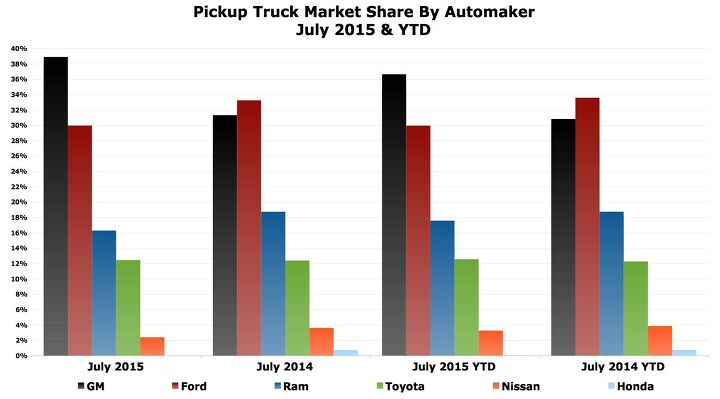


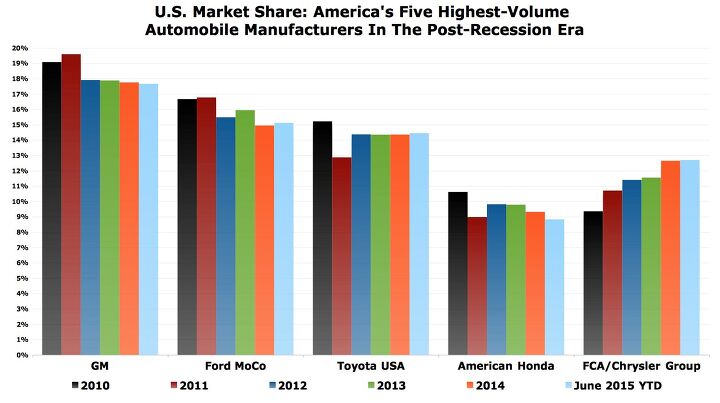



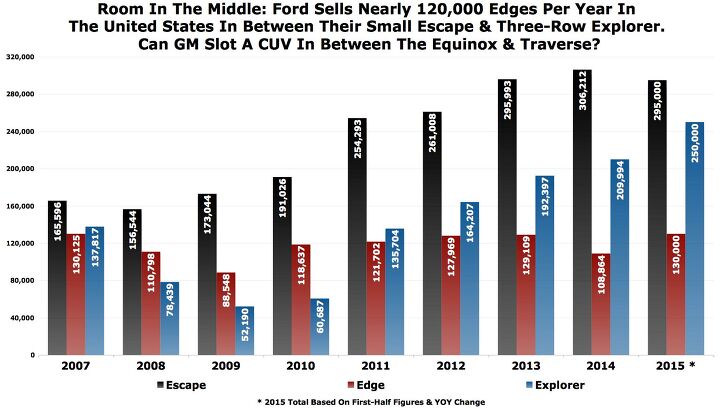
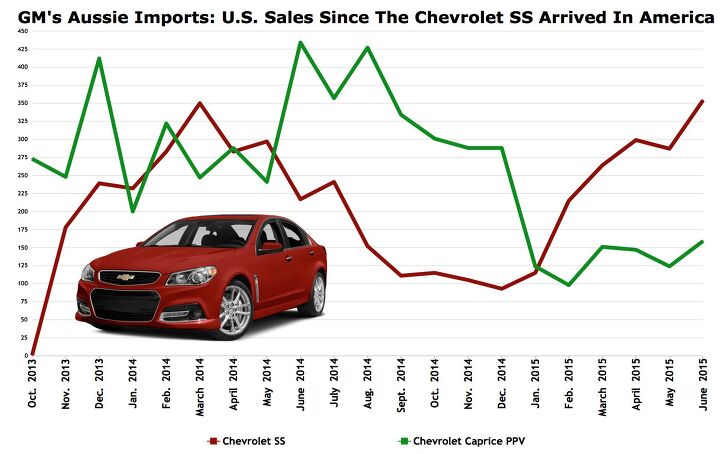

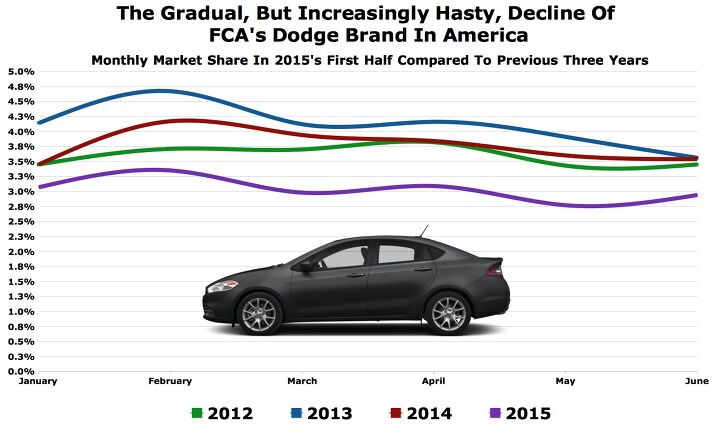















Recent Comments